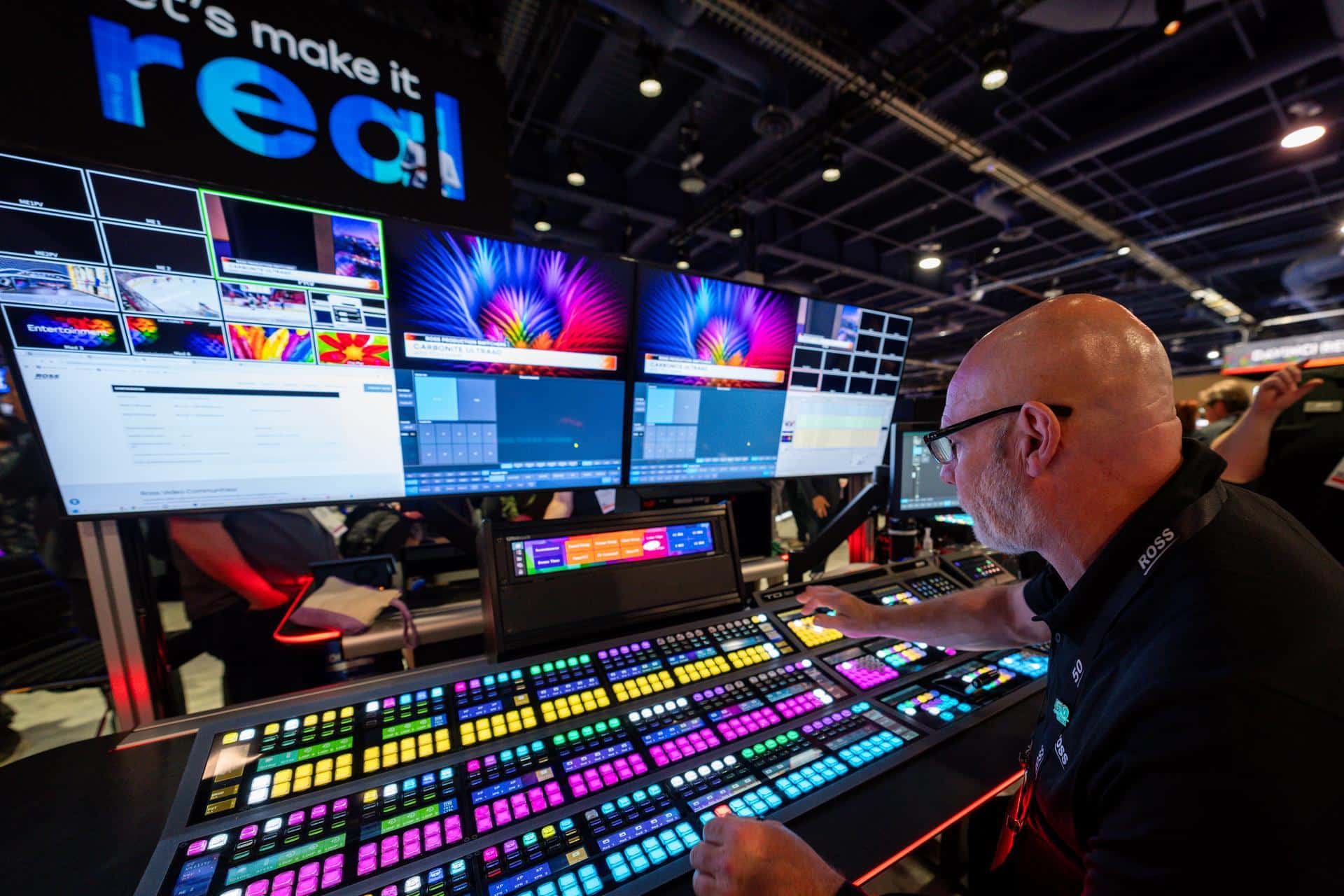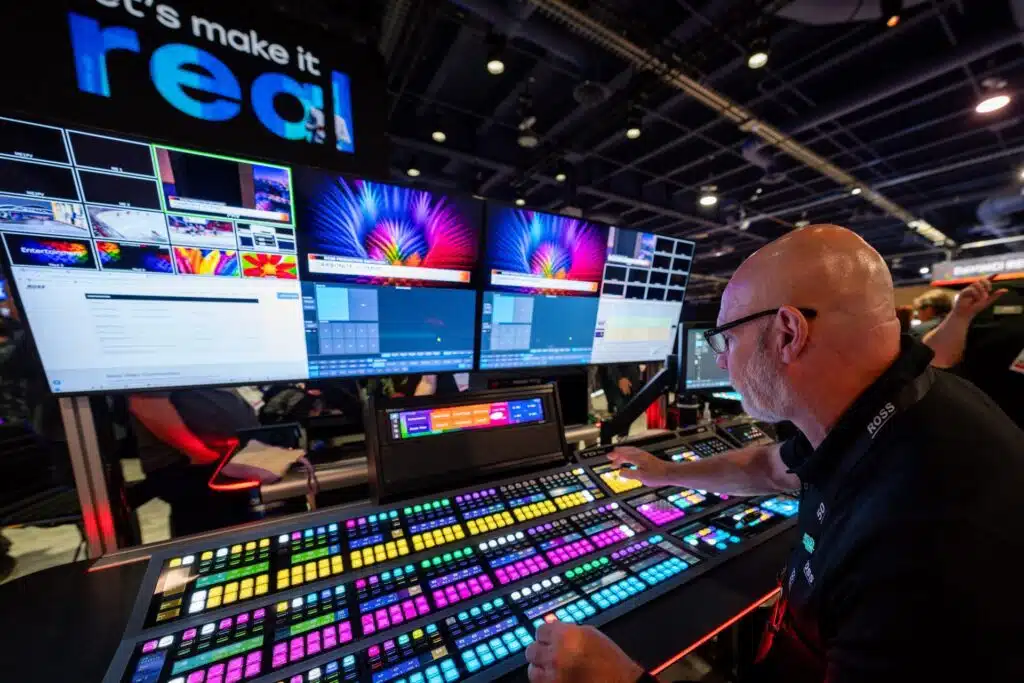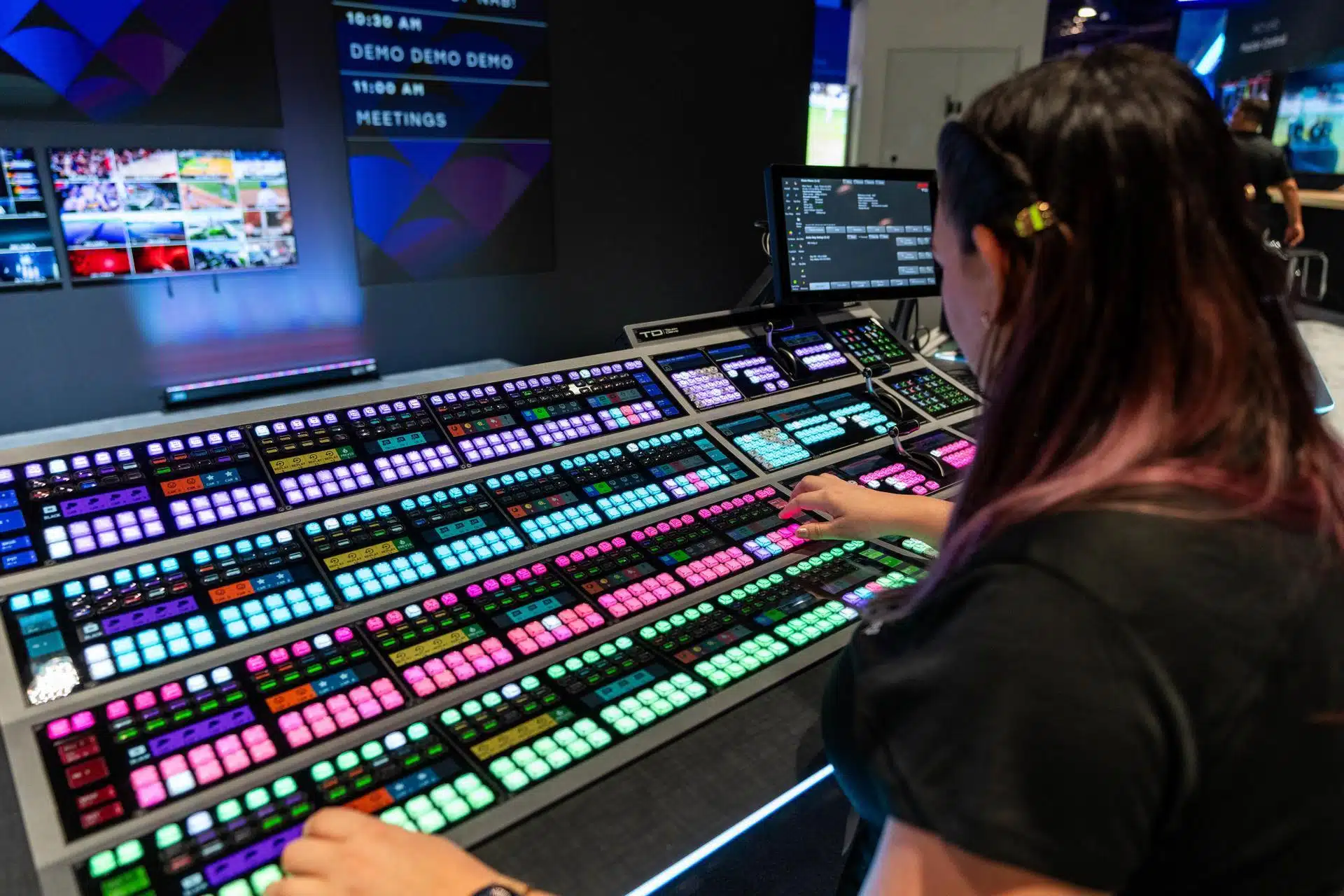June 9, 2025 - Ross Video Team, Insights & Resources
Broadcast Vendor Success Starts with Customer Satisfaction


Trust in your broadcast technology partner isn’t a luxury; it’s a financial and operational necessity. When every second on-air impacts a broadcaster’s success—for better or worse—vendor support can make or break it.
Broadcast technology companies that prioritize customer satisfaction help to drive long-term loyalty and profitability for their customers. Those that don’t risk exposing their clients to operational disruptions and increased pressure on internal teams—especially when redundancies fall short.
Across industries, organizations rely on trust and vendor reliability when making technology investments—and the broadcast sector is no different. Consider these stats to highlight the importance.
According to Bain and Capital, an NPS Promoter score—i.e. A user who would recommend a service to a friend or colleague—has a customer lifetime value that’s 600% to 1,400% higher than a detractor. Likewise, 78% of consumers will do business with a company again after a mistake, but only if that company promises excellent customer service. Perhaps most critically, customers who see a vendor as trustworthy are 3x more likely to forgive service-related mistakes.
This tells us that customers are willing to forgive the occasional hiccup in a product or service offering, but only if it’s backed up by strong customer service. Consider this from a broadcast perspective. Outages and technical glitches happen—even with the most robust tools and platforms. But if that outage or glitch isn’t mitigated quickly with strong customer service, trust in the vendor erodes rapidly. This is why trust and customer satisfaction are so important.
In this article, we’ll explore the real cost of poor vendor support, what best-in-class customer service looks like in broadcasting, and how to identify a technology partner truly committed to long-term customer success.

Broadcasting, as you know, operates in real-time. Once the show starts, there’s little to no margin for error. Every second of downtime in a live broadcast environment carries financial and operational consequences that can negatively impact the health of your business, making vendor support an essential part of your long-term success.
Unfortunately, it’s not uncommon for broadcasters to face delayed response times, unhelpful customer service, and inconsistent technical support. This leaves them vulnerable to unexpected disruptions, and alone when major incidents do occur.
When vendors fail to step up, the impact goes beyond technical failures—it increases costs and stresses production teams. This is a problem when you factor in consumer sentiment related to bad experiences and broken trust.
According to Zendesk, 80% of consumers say they would rather do business with a competitor after just one bad experience. In broadcasting, that sentiment is amplified by the scale and importance of the event being covered. Suffer a technical outage during a once-in-a-lifetime news event, and it’s tough to win back viewer trust.
To illustrate this point further, let’s explore some of the biggest risks of working with a vendor that doesn’t prioritize customer support.
In live broadcasting, even a minor technical issue can have major repercussions. Whether it’s a control room system glitch or a graphics failure, broadcasters need fast, knowledgeable vendor support to troubleshoot problems and minimize downtime.
Let’s look at an example to illustrate the negative impact of poor vendor support in this scenario.
Example: A newsroom relies on an automated production control system to coordinate cameras, graphics, and live shots. Minutes before going live, the system malfunctions, and the technical team scrambles for a solution. When they call the vendor for support, they’re put on hold, passed between departments, and ultimately told that a technician will be available “within a few hours.”
Impact: With no immediate resolution, the team misses key transitions and camera cuts, resulting in a disjointed broadcast. The production crew is left stressed and under pressure, as they work to stabilize the show in real-time.
When vendor support is slow or unresponsive, it’s not just the broadcast that suffers—internal teams do, too. Delays in issue resolution create workflow inefficiencies, missed deadlines, and increased labour costs, forcing teams to work overtime or seek last-minute workarounds.
Example: A sports broadcaster relies on instant replay and real-time graphics to enhance viewer engagement. A sudden software glitch prevents instant replays from loading during a major live event. The production team contacts their vendor, only to receive an automated message promising a response within 24 hours—long after the event has ended.
Impact: The broadcast misses key moments, jeopardizing sponsorship commitments and leaving the production team scrambling to explain the failure to executives and advertisers.
Broadcasters work hard to build trust with audiences and advertisers. All it takes is one major broadcast failure to undermine years of credibility. When a vendor fails to deliver timely support, the damage extends beyond technical issues—it directly affects brand reputation and revenue.
Example: A network experiences technical issues during a highly anticipated live awards show. Social media explodes with viewer complaints, advertisers demand compensation, and competing networks capitalize on the failure.
Impact: The production’s reliability is questioned, causing missed sponsor placements, frustrated teams, and increased scrutiny from stakeholders. All of this could have been avoided with proactive vendor support and faster problem resolution.
Some vendors struggle with high employee turnover, which means that support teams are constantly changing. When this happens, new reps may lack the historical knowledge needed to resolve recurring issues, forcing broadcasters to re-explain problems repeatedly.
Example: A broadcaster dealing with ongoing software crashes reaches out to their vendor for help. They discover that their previous support representative is no longer with the company, and the new rep is unfamiliar with their specific workflow and system configuration.
Impact: The problem persists longer than necessary, frustration builds within the production team, and the broadcaster begins looking for alternative solutions.
Clearly, the cost of poor vendor support extends far beyond inconvenience. It can lead to significant issues with production reliability and broadcaster confidence.
Broadcasters need partners who prioritize responsiveness, expertise, and long-term stability, ensuring that critical issues are resolved quickly and efficiently.
Let’s discuss what that ideal partner looks like and how to find one.
So, what does best-in-class customer service actually look like? Here are the five key traits that define a truly reliable broadcast technology partner

Live production doesn’t happen on a 9-to-5 schedule. Issues can arise at any time, and broadcasters need immediate access to real experts.
The best vendors offer 24/7 global support, ensuring that a knowledgeable technician is available to assist no matter the time zone or the urgency.
Technology vendors that prioritize customer relationships over quick sales create stronger, more resilient partnerships. A customer-first approach means support doesn’t stop after the sale, but extends through onboarding, training, ongoing service, and product development.
When issues arise, response time is everything.
A reliable vendor doesn’t just acknowledge a problem, they resolve it quickly and efficiently. Instead of bouncing customers between departments or offering temporary workarounds, they assign experienced engineers who can diagnose and fix the problem without unnecessary delays.
The best vendors don’t just sell products; they build partnerships. Instead of chasing short-term sales, they invest in long-term relationships. This ensures that customers receive continuous improvements, dedicated support, and industry-leading expertise for the duration of their partnership with that vendor.
A truly customer-focused vendor doesn’t wait for problems to arise, they actively seek feedback, engage with customers, and continuously improve their solutions. Whether through regular check-ins, customer surveys, or tailored training sessions, they make sure broadcasters have everything they need to succeed.
Keep reading: How Ross Video Turns Customer Feedback into Cutting-Edge Solutions
As we’ve discussed, not all broadcast technology vendors prioritize customer success. Before making a purchasing decision, broadcasters must evaluate a vendor’s track record, support responsiveness, and long-term commitment to its customers.
Here’s how to identify a truly customer-focused technology partner.
A vendor’s existing customer relationships are one of the strongest indicators of their reliability. Look for consistent, long-term partnerships and customer testimonials that emphasize responsiveness, expertise, and proactive support.
Keep Reading: Ross Video Customer Success Stories
Online reviews
Industry recognition

Red flag: If a vendor frequently receives complaints about service delays or lack of responsiveness, it’s a sign that they may not be equipped to provide reliable long-term support.
A vendor’s real support experience often differs from what sales pitches promise. Before signing a contract, broadcasters should test their responsiveness firsthand.
Call their support line:
Ask about response times:
Red flag: If it takes more than an hour to reach an expert, or if the support rep struggles to answer basic questions, expect longer delays when real issues arise.
The best vendors don’t just respond to problems, they actively improve their services based on customer feedback. Look for vendors with a strong track record of innovation, and a deep knowledge of industry trends and broadcaster needs.
Do they collect customer feedback?
Do they provide ongoing education and product updates?
Red flag: Vendors that don’t seek customer input or update their offerings may focus more on short-term sales than long-term service excellence.
A trustworthy vendor operates with honesty and clarity. They don’t hide behind vague service agreements or misleading sales tactics.
What does their pricing model look like?
Do they follow through on commitments?
Red flag: If a vendor’s pricing structure is unclear or support comes with unexpected costs, they may focus more on profits than customer success.
Evaluating a vendor goes beyond comparing product specs and pricing. It’s about ensuring they’re committed to long-term customer success.
By researching customer feedback, testing support responsiveness, assessing their approach to continuous improvement, and ensuring ethical transparency, broadcasters can choose a true partner that will support their success for the long haul.
Trust in broadcasting isn’t just about technology but rather the reliability and support behind it. A vendor’s commitment to customer satisfaction directly impacts operational stability, audience trust, and long-term success. With 78% of consumers willing to return after a mistake if service is excellent, choosing a partner with proactive support, ethical business practices, and long-term vision is critical.
Don’t leave your success to chance—partner with a vendor that puts your needs first.
Upgrading your production tech stack is crucial for improving workflows, enhancing content quality, and staying competitive. But how do you ensure a smooth transition without downtime or operational disruptions?
To help, we’ve created a comprehensive guide that explores the challenges of production technology upgrades and offers actionable strategies for achieving continuity throughout the process.

Trust in technology is a foundational element for broadcasters, particularly on the operational side of the business. While viewer loyalty and advertiser confidence are crucial, these are …

Stability is crucial in live broadcasting and production. It can make or break a company’s reputation, leading to either gains or losses in viewership and trust. Picture …

Broadcast technology is only as reliable as the people behind it. A vendor can promise cutting-edge solutions in their marketing and sales decks, but without deep industry …
Your essential guide to navigating live video production technology upgrades and replacement.